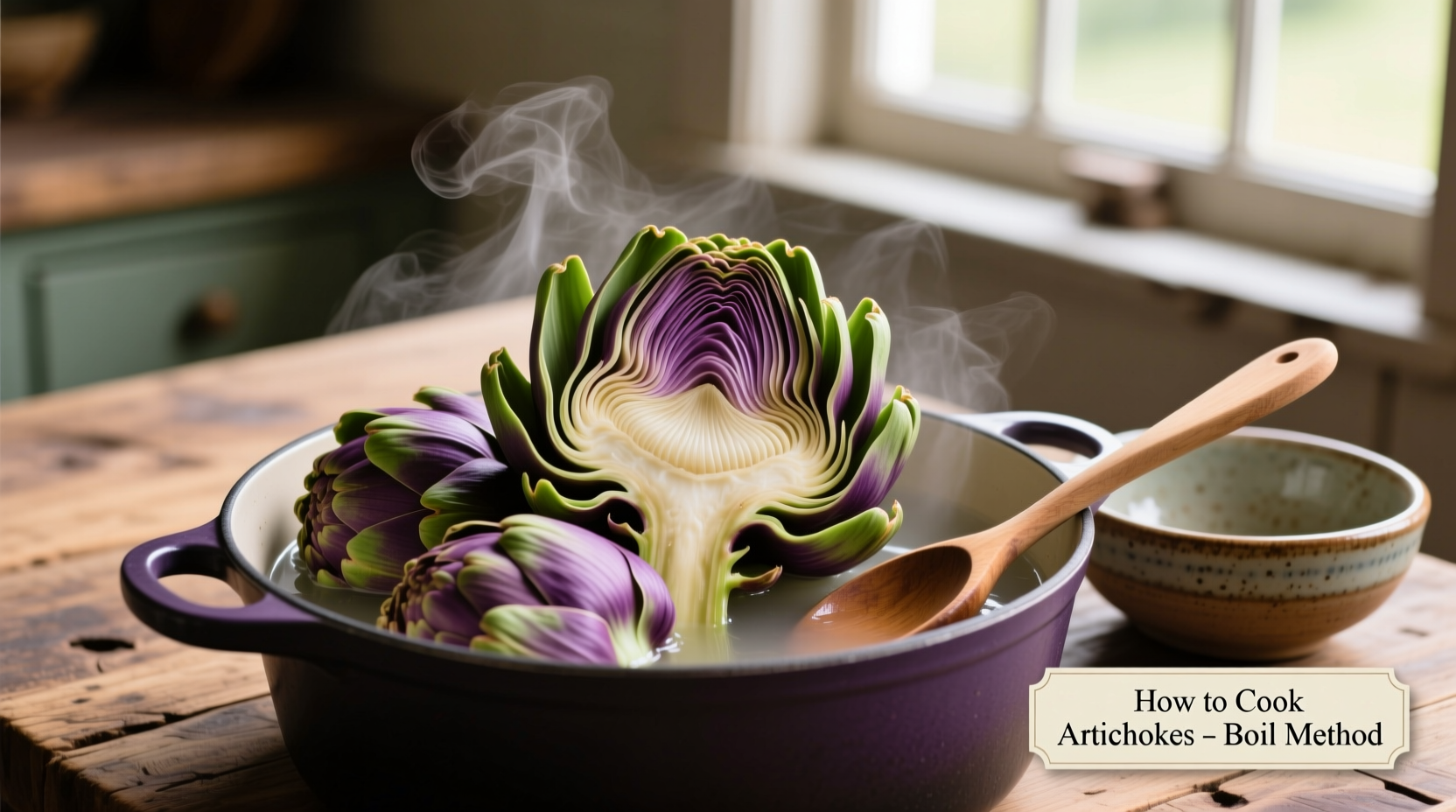Perfectly boiled artichokes deliver tender hearts and flavorful leaves every time. This comprehensive guide reveals professional chef techniques for boiling artichokes that guarantee optimal texture and flavor, whether you're preparing them for the first time or refining your skills. You'll learn precise preparation methods, exact cooking times for different sizes, foolproof doneness tests, and serving suggestions that elevate this ancient vegetable into a memorable dish.
Artichoke Preparation: Setting Up for Success
Proper preparation prevents frustration and ensures even cooking. Start with fresh artichokes that feel heavy for their size with tightly closed leaves. Discard any with spreading leaves or dry stems, which indicate age.
Step-by-step preparation:
- Cut 1 inch off the top using a sharp chef's knife
- Trim ½ inch from the stem, leaving enough to stand upright
- Use kitchen shears to snip off thorny leaf tips
- Rub cut surfaces with lemon to prevent oxidation
- Spread leaves slightly by pressing artichoke top-down on counter
This preparation technique, recommended by the University of California Cooperative Extension, maximizes water penetration while minimizing browning. The slight leaf spreading allows boiling water to reach inner leaves more effectively.

Boiling Artichokes: The Complete Method
Follow these precise steps for consistently tender artichokes without mushy exteriors:
- Fill a large pot with enough water to cover artichokes completely
- Add ¼ cup lemon juice and 2 tablespoons salt per quart of water
- Place artichokes stem-side down in the pot
- Weight them with a heatproof plate to keep submerged
- Bring to a rolling boil, then reduce to a gentle simmer
- Cover and cook according to size (see timing chart below)
| Artichoke Size | Diameter | Simmer Time |
|---|---|---|
| Small | 3-4 inches | 25-30 minutes |
| Medium | 4-5 inches | 30-35 minutes |
| Large | 5+ inches | 35-40 minutes |
The National Center for Home Food Preservation confirms that adding acid like lemon juice prevents enzymatic browning while maintaining texture. The salt enhances flavor penetration without making artichokes overly salty.
Testing for Perfect Doneness
Don't rely solely on timing—use these two reliable tests:
- Leaf pull test: Outer leaves should detach with slight resistance
- Base test: Tip of a knife should slide easily into the artichoke base
Overcooked artichokes become mushy and lose their delicate flavor. Undercooked artichokes have tough, stringy leaves that won't pull cleanly from the base. The ideal texture allows leaves to separate cleanly with gentle pressure.
Serving and Enjoying Boiled Artichokes
Remove artichokes from water and drain upside down for 5 minutes. Serve warm with one of these classic dipping sauces:
- Lemon-garlic melted butter
- Herb-infused mayonnaise
- Vinaigrette with Dijon mustard
- Traditional aioli
To eat, pull off leaves one by one, dip the fleshy base in sauce, and scrape off the tender portion with your teeth. When you reach the heart, remove the fuzzy "choke" with a spoon before enjoying the prized center portion.
Common Mistakes to Avoid
Even experienced cooks make these artichoke preparation errors:
- Skipping the lemon bath: Causes rapid browning and flavor degradation
- Overcrowding the pot: Leads to uneven cooking (cook in batches if needed)
- Boiling instead of simmering: Creates tough exteriors and uneven texture
- Not weighting artichokes: Causes uneven submersion and cooking
According to culinary research published by the American Chemical Society, the citric acid in lemon juice inhibits polyphenol oxidase enzymes responsible for browning, preserving both appearance and flavor compounds during cooking.
Storing and Reheating Leftovers
Store cooled boiled artichokes in an airtight container with some cooking liquid for up to 5 days. For best results when reheating:
- Steam for 5-7 minutes to restore moisture
- Microwave with a damp paper towel for 1-2 minutes
- Never boil reheated artichokes (they'll become waterlogged)
Freeze cooked artichoke hearts in vacuum-sealed bags for up to 6 months. Thaw overnight in the refrigerator before reheating.
Frequently Asked Questions
Can I boil frozen artichokes? Yes, but add 5-10 minutes to cooking time. Do not thaw first, as this causes texture degradation.
Why do my artichokes taste bitter? Bitterness comes from overcooking or using water with high mineral content. Try filtered water and reduce cooking time by 5 minutes.
Can I add other flavors to the boiling water? Absolutely. Bay leaves, garlic cloves, and peppercorns enhance flavor without overpowering the artichoke's natural taste.
How do I know if an artichoke has gone bad? Discard artichokes with black spots, slimy texture, or a sour smell. Fresh artichokes should feel firm with no give when squeezed.











 浙公网安备
33010002000092号
浙公网安备
33010002000092号 浙B2-20120091-4
浙B2-20120091-4